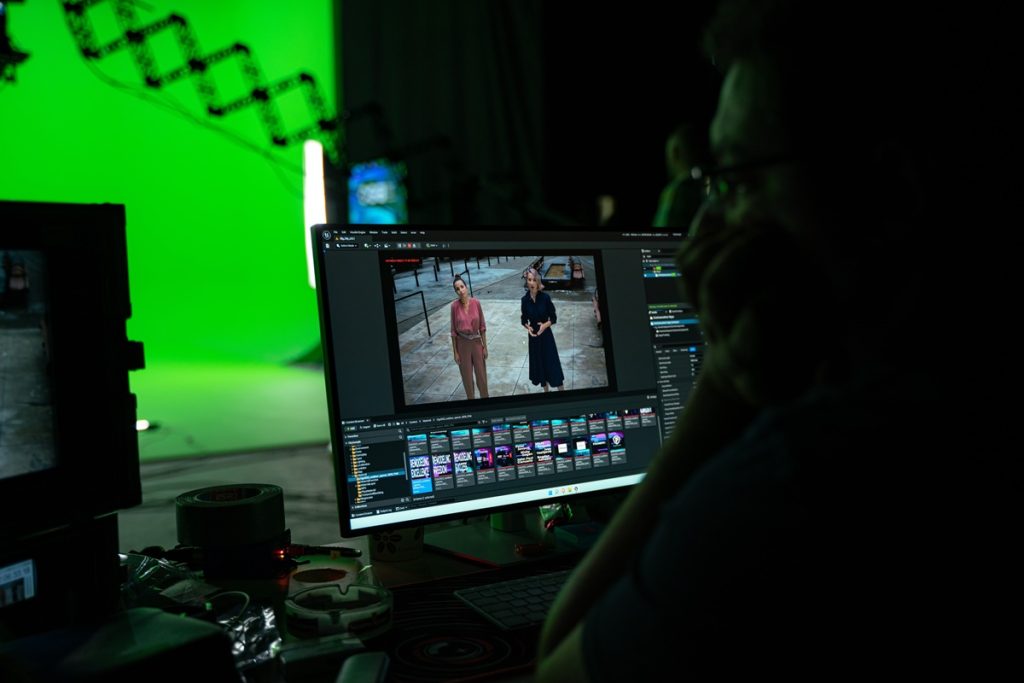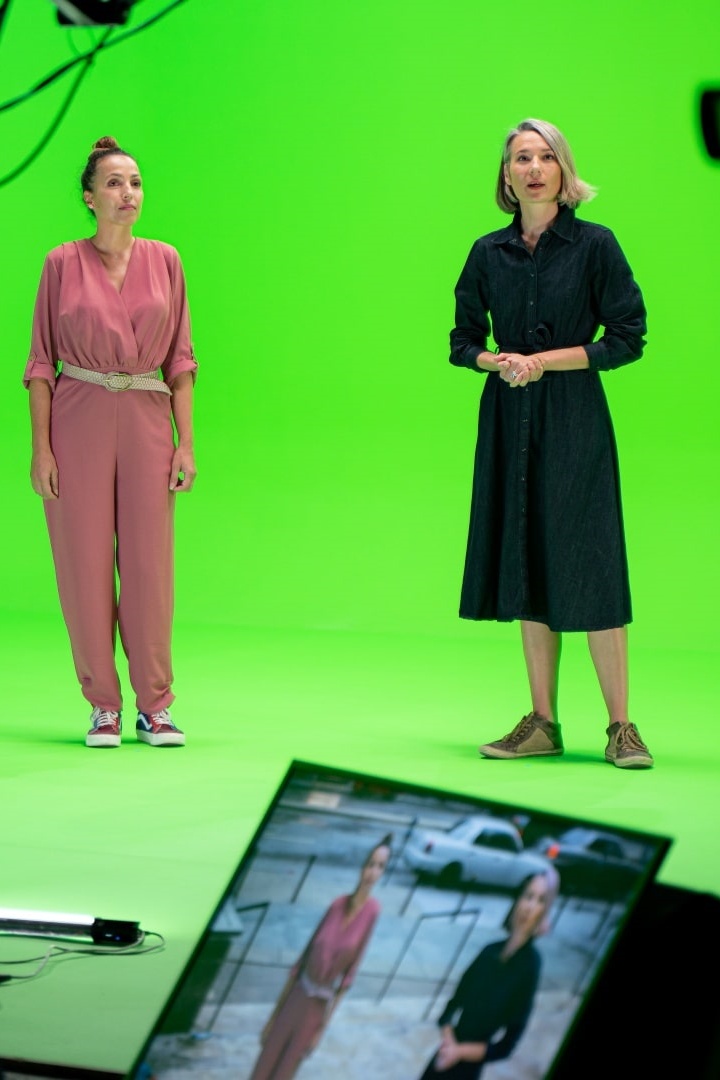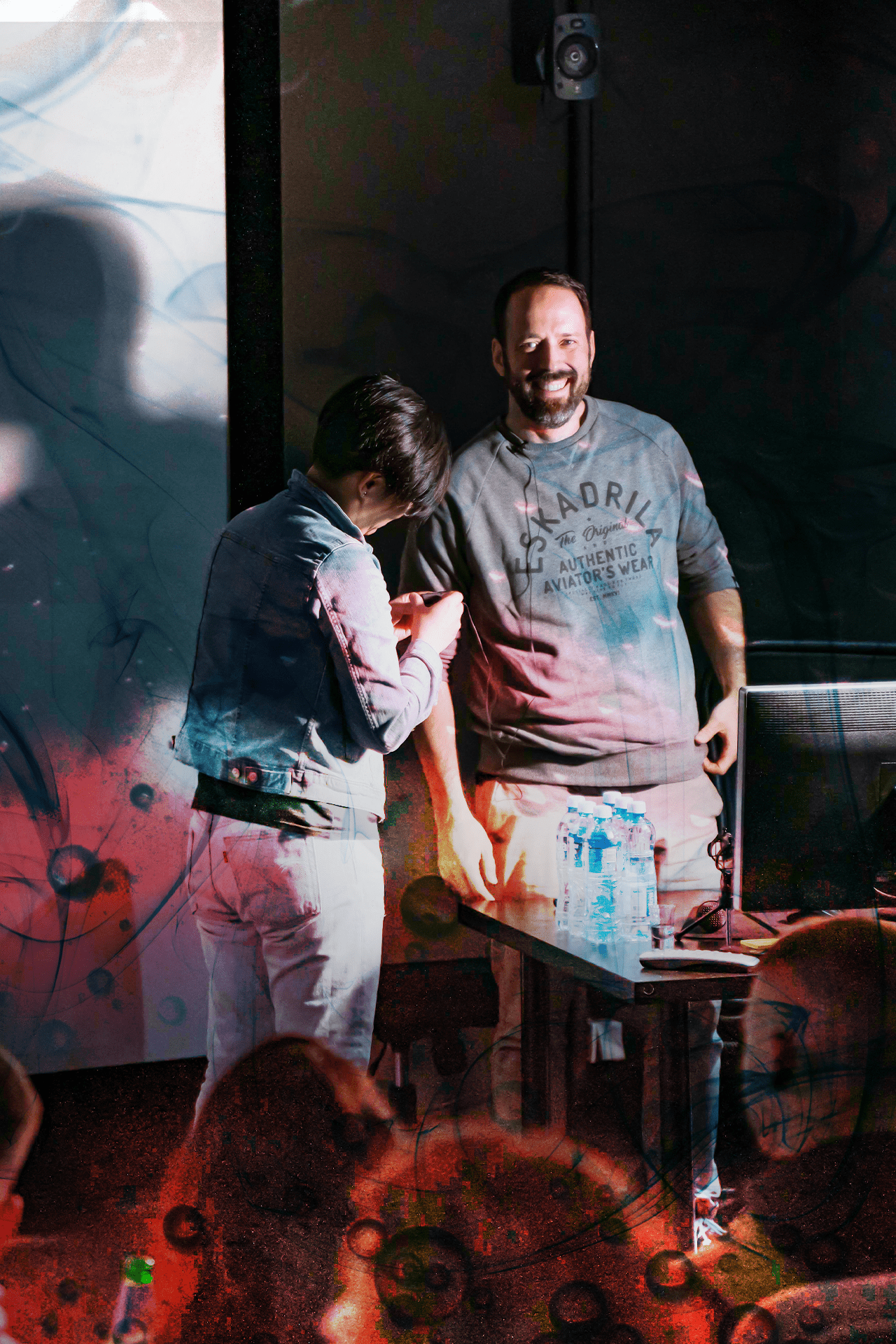August 28th, 2022
The Unreal Potential for Present and Future Filmmakers
Here we go beyond technology and talk about creative work with 3Lateral.

Since 3Lateral joined Serbia Film Commission there has been growing curiosity as well as doubts on how local filmmakers can deploy metahumans and unreal engine potential into their current projects. We dedicated some of the CGA Belgrade conference to enable understanding and creative exchange between new exiting projects that technology will enable. Having a company like 3Lateral in Serbian film and TV production network is invaluable source of knowledge and drive toward future of filmmaking. Here are some burning questions we tried to unravel with members of their team. Let’s go beyond technology and talk about creative work.
The Unreal Engine website offers an ecosystem of learning tools, introducing the Unreal community to screenwriting, storyboarding, location substitution, and even the actors or extras. Let’s get closer to each of these production elements. How would you introduce or explain the Unreal Engine as a film tool of the future to a broad audience of seasoned film professionals?
Unreal Engine is a powerful tool for creators from various industries to bring their vision to life. This free tool enables game developers across industries to release next-generation real-time 3D content and experiences with greater freedom, fidelity, and flexibility than ever before.
When speaking about Unreal’s use in the film industry, one could think about it as a playground for storytellers and creators. Unreal Engine provides more freedom to the creators, allowing them to visualize the outcome not just through their eyes, but through the lenses – right away, and get immediate feedback. Also, it allows creators to have the same assets from first concept to final frames, eliminating waste across every phase of production. Creators can capture the movie, but also use the same assets and scenes for marketing purposes, interactive projects, or location-based experiences. Unreal Engine has already been used in the filming and advertising industries’ most ambitious projects such as The Mandalorian and Ford v Ferrari.

We know what some of the readers may think: we are not that large of a studio and our budgets are limited, but actually, the technologies and workflows that were once the preserve of big studios with multi-million dollar budgets have become democratized, giving rise to a new wave of content creators. At one time, using real-time technology in film and television production was considered experimental. Now, it’s being adopted across the entire workflow and used for a multitude of content. Real-time workflows are impacting projects at every stage of the creative life cycle, from conceptual writing and location scouting to production design and final-frame visual effects.
If you don’t know where to get started, there are loads of online learning paths and Fellowship programs, as well as onsite learning with the Crater Training Center UE course, and you can also apply for a new course at FDA in Belgrade based on Unreal Engine. Options are there, available at any moment, it’s up to creators to jump in.
Unreal Engine Essentials @ Crater
The great emphasis of technology is on democratization and accessibility to projects with modest budgets. What is your experience regarding this goal? How realistic is it in the short term? Are there already some successful examples?
What used to take months, even years, now can be done in weeks or even hours, and with only basic knowledge around specific phases of the pipeline. Epic Games is providing free tools that open new possibilities for teams of creators, where even with low budgets they have an equal chance to create impressive experiences. For example, City Sample – a free downloadable city from The Matrix Awakens: An Unreal Engine 5 Experience – is available as a preset of millions of scenes that can be used for new projects. It consists of a city, complete with buildings, vehicles, and crowds of MetaHuman characters, where creators can choose the scene, set the lightning and create a completely brand new story. Creators can also use megascans or assets from Quixel lab or RealityScan to create a unique environment. MetaHuman Creator is a cloud-based free tool for creating highly believable MetaHumans who can drive the narrative of the film or populate the city.
When speaking about time savings, at first instance it may take some time for creators to get familiar with the assets and their possibilities, but soon it will become the most preferable playground to explore and create expansive and engaging environments using Unreal Engine 5.
There are numerous already announced projects and even more are yet to come, but here are a few examples where MetaHumans were used in the short movies like Project Ember, The Well or In Vaulted Halls Entombed.
When speaking of democratization, adoption of the Unreal Engine has continued to pick up speed in recent years. From game development to automotive, architecture, live events, simulation and even fashion. There’s no telling how real-time technology will continue to revolutionize industries beyond games.
How do you, as creators of Metahuman technology, see the process of replacing real actors with metahumans? In which areas has it already been applied, and where is it going to expand in 3 to 5 years?
Our aim was not to replace real actors with digital humans, but to create a free and accessible creation tool to make the creation of high-quality digital humans easier and less time consuming. We’ve seen game studios, filmmakers, architects and brands leverage MetaHuman Creator to create truly convincing digital humans across a myriad of applications.
The era of digital humans has also opened up a realm of new possibilities for actors to bring their digital likeness to virtual worlds– a new forum in which performers could extend their act. From driving digital humans’ facial gesticulation to body motion, licensing their digital replicas, driving fictional characters and many other possibilities. Actors can even play younger versions of themselves (e.g. The Matrix Awakens) or can be involved in several projects all over the world at the same time. Therefore the digital era should not be considered as something where their job role is vanishing, but the opposite; they can embrace new ways of performing and making the most of their talents.
MetaHuman Creator allows storytellers to create MetaHumans that can fully drive the story, can be used as background characters to populate a scene, or to star alongside real-life actors. There was a very funny story from one of our clients, where one of the actors did not show up at the shooting, so the producer sat at their desk, created a MetaHuman, and incorporated that character into the scene to replace the missing actor. As we mentioned, these tools are something that can help teams be more creative and experiment with storytelling tools that weren’t accessible just a few years ago.
What is the most demanding project you have done in this domain so far? What have you achieved with it? How fast is the development of Metahuman technology happening?
In terms of internal projects, The Matrix Awakens: An Unreal Engine 5 experience was definitely the most challenging project we’ve done so far. The process included capturing the likeness and 4D performances of two of Hollywood’s most beloved actors. To make the project even more challenging, we needed to animate the actors’ younger likenesses to be paired with their present-day digital avatars, mixing animation with their acting performances, and adding MetaHuman characters as one of the main actors in the demo. On top of the work we did with our Hollywood talent we have also created a hero character IO, within the MetaHuman Creator, as well as 13.000 MetaHumans to populate and bring the city to life. This was the most advanced tech demo that we have ever created, and offers a vision for what the future of interactive content could be.
Through the Epic MegaGrants program, Epic Games is accelerating the work of creators across many industries, including an entirely new generation of filmmakers. Could you share some of the opportunities and achievements from the community in Serbia to encourage more applications coming from this region?
Epic Games is committed to accelerating the work of innovative teams using Unreal Engine with financial support so that they can continue to create projects that push the boundaries of real-time, interactive 3D content and experiences, or enhance open-source capabilities for the 3D community. One example is Sava Živković, a freelance Director from Serbia, an outstanding artist who received an Epic MegaGrant for his upcoming animated film.
For any teams interested in working with Unreal Engine across games, film, animation, architecture —whatever you imagine— we encourage you to…
The article is originally published at FilminSerba.com


